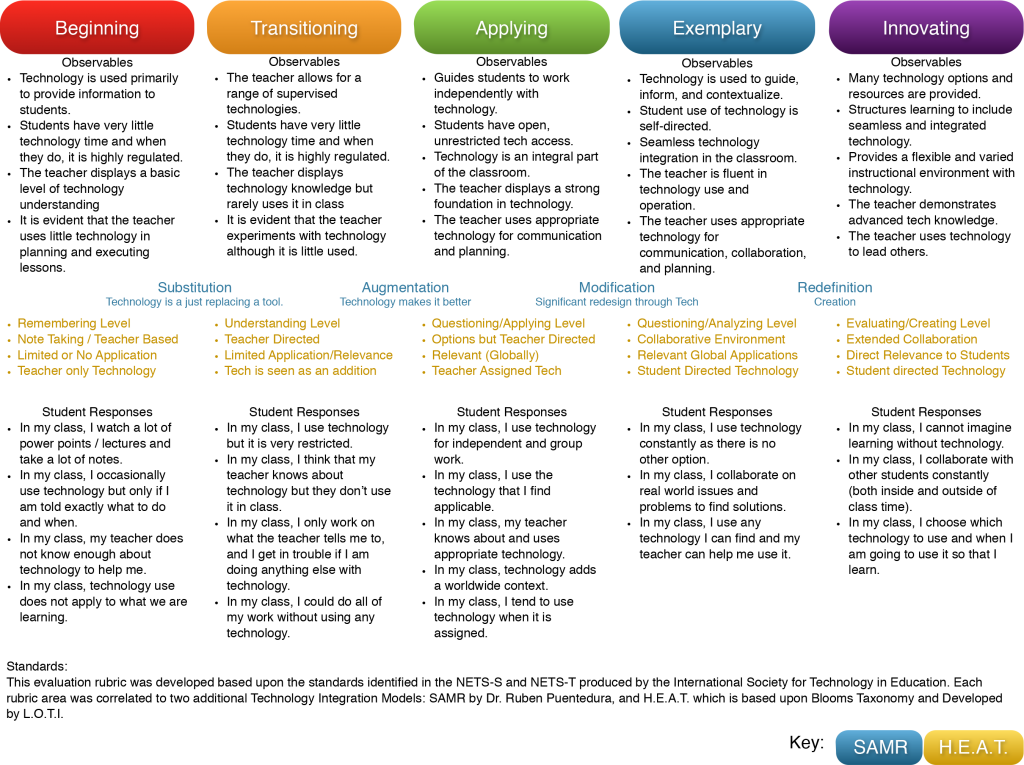How do we measure technology integration?
With all of the technology and tools that we put in the hands of students, teachers, and administrators, how do we set expectations and monitor progress towards integration and activation?
SAMR, HEAT, and TPaCK are good guidelines, but they are still abstract for teachers to latch onto.
So, what can you do, either as a teacher or as an admin to support student learning through technology?
For me, the solution is using an observation rubric that ties back to the idea of activating and fostering innovation and creativity with and through Technology. In 2013, I created the evaluation rubric below to use with my staff during observations. Since its creation, I have used it in 7 Schools in both US and International Settings to collect student observation data.
Technology Integration Continuum

The Foundation
Now that you have seen my Evaluation framework, this is how I model it and assess it in the classroom. This continuum is about growth, not a single numeric score. Ideally, by taking educators through this continuum you can help to maximize Flow and Fiero around instructional design and help to increase successful technology integration. The first step of integration is to build an efficient coaching mechanic with your teachers. Always keep the following in mind:
Flow happens when teachers are fully immersed in the process of growth and change. To reach that state of full engagement, the activity needs to be intrinsically interesting and just within reach of their abilities. If the activity is too challenging, then it is overwhelming and stressful. If the activity is not challenging enough, then it is boring and tedious. The sweet spot – the flow spot – is where the level of challenge perfectly matches the skills, training, strengths, and resources of the performer… Coaches want to assist teachers to enter that state as often as possible while working on their instructional strategies. (Tschannen-Moran & Tschannen-Moran, 2010, p. 218)
As an administrator who coaches, it is important to emphasize that growth is the metric you are looking for. Everything in this evaluation is based upon the idea of developing Professional Capital. If you are the only one conducting on site observations (or virtual recorded observations) ensure that you constantly reference the metrics you are using. On the other hand, if you are working with a team, make sure to regularly calibrate on the rubrics. It is essential that you setup a trusting growth based model of coaching for you teachers to make this evaluation style the most effective.
The Observation
When I first present this model to a new staff, I never display the levels 4-5 on the rubric. My goal in the beginning of the year is to evaluate where teachers stand at the start of the year. In all honesty, there are very few 4s and 5s that have come my way over the past five years.
Calibration
My team and I spend a few weeks doing anywhere from 6-8 direct classroom walkthroughs. We have nine technology staff members, and all of them go on this calibration.
